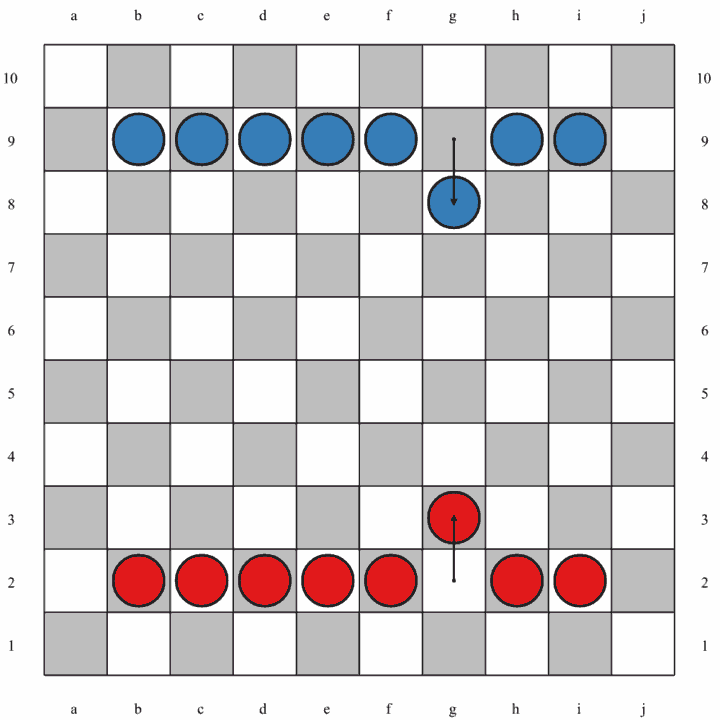Welcome, fellow game enthusiasts! Today, we’re diving into the wacky world of ‘Mimic‘. Get ready for a review filled with laughs, quirks, and the occasional eyebrow-raising moment. ‘Mimic’ promises vibrant artwork, engaging gameplay, and a mix of strategy with a pinch of randomness. Does it live up to its potential or fall flat in the game night spotlight? Let’s find out!
How It Plays
Setting Up
First, lay out the board on a flat surface, ensuring it’s not under the cat’s favorite sunbeam. Give each player a set of identical colored tokens. Shuffle the cards, then deal three to each player. Place the rest in a draw pile. You’re ready to roll!
Gameplay
Players take turns by picking a card from their hand and matching its pattern with the one on the board. When a match occurs, shout “Mimic!” Trust me, it’s more fun if you shout. Players then place a token on the matched spot. Continue this until someone runs out of tokens or the draw pile diminishes, much like my patience when I can’t find a match.
Winning the Game
Once the last token is placed or the draw pile is empty, count the number of tokens each player has on the board. The player with the most tokens in a row shouts “Victory!” and gets bragging rights until the next game. Just remember, be gracious in victory… or at least try!
Want to know more? Read our extensive strategy guide for Mimic.
Exploring the Mechanics and Rules of ‘Mimic’
Let’s talk about the gameplay mechanics and rules of ‘Mimic,’ a board game that had me laughing so hard I almost spat my drink across the table. This delightful game centers around players acting out words or phrases using only gestures while teammates guess what’s being mimed. Think charades, but with more giggles and facepalms when your friend mistakes a chicken dance for a victory lap.
In ‘Mimic,’ each player gets a turn to select a card from the deck, containing hilarious words or phrases to act out. Time is of the essence, so be quick on your feet—or rather, your hands, arms, and wacky faces. Points are scored based on correct guesses, and the player or team with the most points wins. Sounds simple, right? Well, here’s the twist: some cards include words that are nearly impossible to act out without training in interpretive dance.
While the basic mechanics are straightforward, the game’s charm lies in its unpredictability. However, one thing that can turn a fun evening into a head-scratching ordeal is the randomness. Yep, the deck can sometimes be a cruel master—feeding your opponent easy cards while dealing you a wild card that makes you feel like a deer caught in headlights. Not exactly a fan of how luck controls your fate here, but it’s all in good fun.
The rules are easy to grasp, making it a great choice for families and friends who just want a good time without cracking open a manual longer than a novel. Next up, we’ll see how ‘Mimic’ scores on the fun factor and replayability scale. Let’s just say, it won’t leave you bored!
Fun Factor and Replayability in Mimic
Mimic is a game that brings laughter to the table, and boy, isn’t that why we play games in the first place? When I played with my friends, we discovered that a few drinks can either enhance or entirely derail our gaming skills. Still, the fun factor remains high. It’s all about making wacky sounds and trying to mimic them—it’s like a karaoke night, but without the off-tune screeching. This game had us all rolling on the floor, literally, because my buddy Dave tripped over a chair while attempting a dolphin sound. Trust me, you had to be there!
As for replayability, Mimic holds its ground pretty well. Each game round feels like a new adventure because you never know who’s going to be the next star mimic or who might fail hilariously. The deck of sound cards ensures that you won’t have the same experience twice in a row, keeping the game fresh like a new episode of your favorite comedy show. But be warned: if you play this game every single weekend, some of the surprise might wear off—just like any other game, really. But all you need is a fresh crowd or a bit of creativity to shake up the gameplay. If you’re a fan of variety, Mimic has enough cards to keep the fun coming and the laughs rolling.
So, if you’re looking for a game that’ll keep you chuckling with friends for many nights, Mimic is certainly up your alley. But hold on tight for the next part where I’ll discuss whether Mimic plays fair, or if it’s just another trickster of a game. Stay tuned!
Game Balance and Fairness in Mimic
Ah, game balance, the unsung hero of board games, yet the silent villain of my gaming nights. Mimic does its best to keep everyone on an even playing field, but it’s not without its quirks. My gang of friends often claims that stealing someone’s card is a move worthy of a pirate. And, yes, that’s my favorite part. But here’s where I draw the line: if the game’s balance relies heavily on luck, then you might just call it ‘Mimic Lottery’ instead.
Now, Mimic isn’t completely at the mercy of chance. Strategy does play a part, like figuring out which card to snatch next or anticipating your buddy’s next move. Still, there are moments when the tide turns on a random draw, and if you’ve ever lost a game on a last-second card grab, you know how it feels.
But fret not, dear reader! These quirks are what make Mimic an exciting rollercoaster of emotions. It’s a fair game for the most part, especially if you’re the type who enjoys a little surprise. You’ve got to embrace the chaos or risk sulking in frustration.
With a couple of tweaks or house rules, you can tip the scales of balance back in your favor. That’s the beauty of board games—you can always invent ways to make things a bit fairer. After all, who can resist the allure of a home-brew rule or two?
Stay tuned, my fellow board game enthusiasts, for our next riveting section all about Mimic‘s components and artwork quality. Spoiler alert: it involves smudges and splendor!
Components and Artwork Quality in Mimic
Okay folks, let’s talk about the components and artwork of Mimic – a board game that’s a bit of a chameleon itself. You know, the kind of game that sits on your shelf, and for some reason, keeps catching your eye. So, what’s the deal with the physical bits and pieces that make up this game?
To start, the cards have a nice finish to them. It’s like a handshake from a duck – weirdly smooth and satisfying. They don’t slip and slide around too much, which is great because my cat once did the biggest jump-scare of my life during a playthrough and the cards stayed put. Thank you, card finish gods!
The artwork itself is a feast for the eyes. The illustrations are quirky and colorful, kind of like the fever dream you had after that cheese-heavy pizza last week. They’re vibrant and thematic, helping immerse you into the world of mimicry. Honestly, it could use a few more different designs, but what they’ve got does give the game a cheerful, playful vibe.
Then, there’s the box. Simplicity itself, no bells and whistles. But hey, sometimes you don’t want bells and whistles. A solid box is a happy box, right?
Overall, the components and artwork in Mimic complement the gameplay perfectly. It sets the tone, adds to the experience, and doesn’t detract with cheapness or shoddy design. Would I recommend picking it up? If quirky art and solid build make your heart sing, then yes, add it to your game night line-up!
Conclusion
Well folks, we’ve reached the end of our journey through the colorful world of Mimic. This game proved to be a delightful ride with its vibrant artwork and solid components. Remember, it’s a mix of luck and strategy, so don’t get too cocky or you might find yourself mimicking the wrong move! If you’re looking for something to spice up game night and tickle your funny bone, Mimic might just be the one for you. Just be aware that playing it too often might make it lose its charm quicker than a magician’s disappearing act! Overall, it’s a fun addition to any collection, just don’t expect it to always be fair. Until next time, happy gaming!


